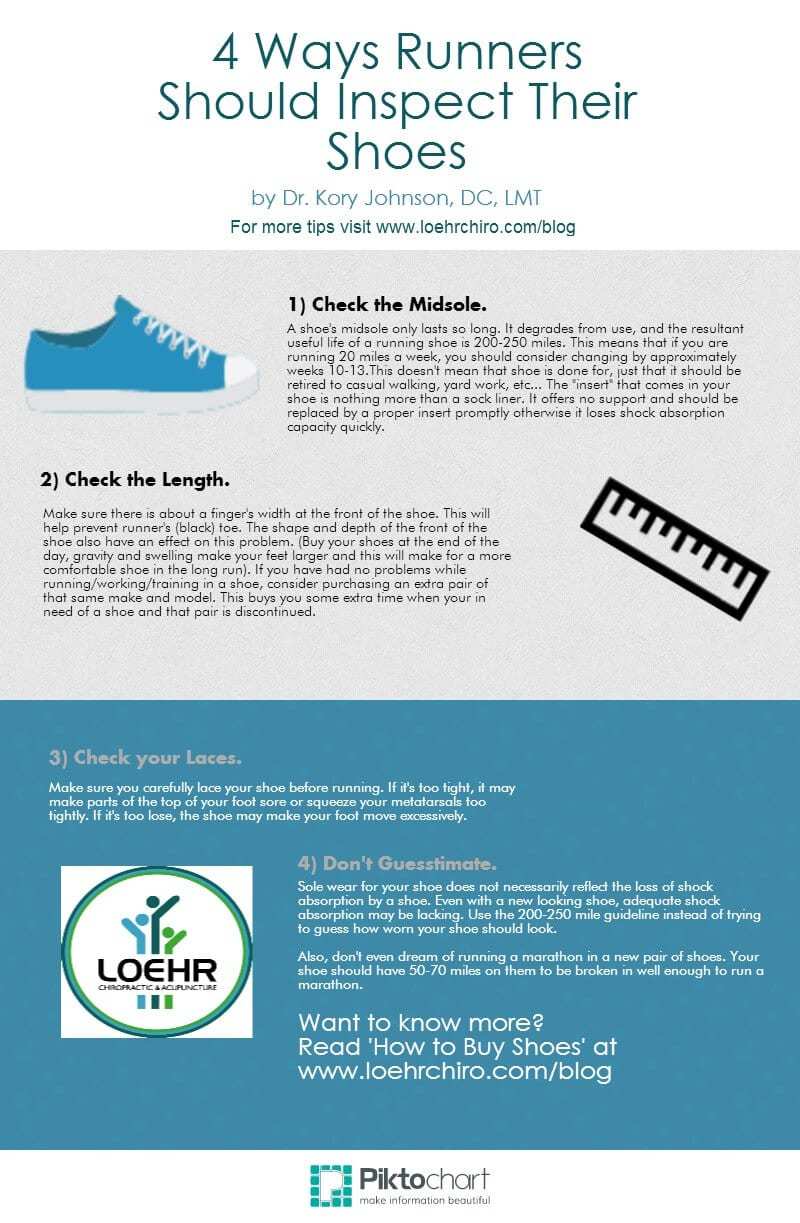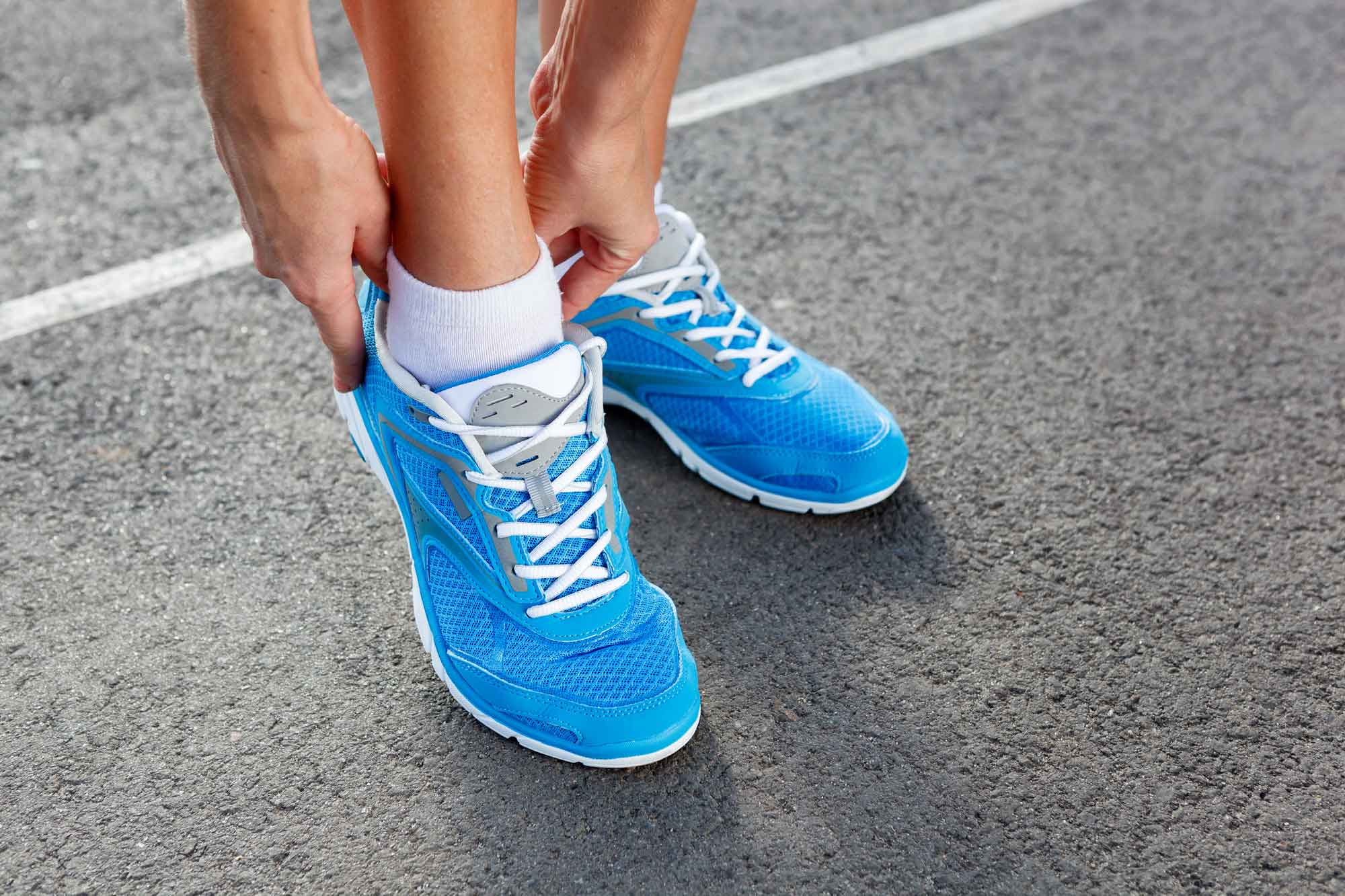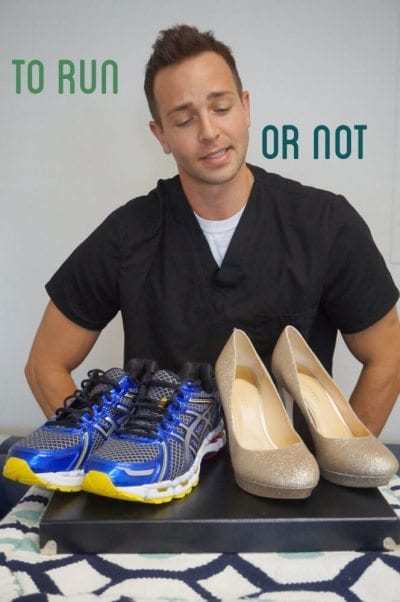We have all been there—standing in front of the towering shoe department looking for that perfect pair of athletic shoes that suites our functional needs as well as our choice of obnoxious colors. So what do you do? That’s where I come in. Not all shoes are created equal, and I am here save you some time and stress on how to choose shoes. There are a few things to consider when looking to purchase a new pair of athletic shoes. But first, let me explain the 3 main types of stance/gait that way as you read along you can focus on what applies to you.
 Step 1—Determine Your Stance
Step 1—Determine Your Stance
How? Schedule an appointment for your shoes.
Then, bring your tennis shoes into your next scheduled appointment, and we’ll review your needs.
Why? Understanding your foot type is the most important step of picking your new pair of kicks. If you choose the wrong pair you’re not only burning money, but potentially damaging your feet, knees, hips, and low back further.
You’re going to diagnose my shoes? Kind of. I will be evaluating your foot type and gait (simply put, how you walk/move).
Let’s look at the soles of your shoes.
- Take notice of the wear that has occurred. Does your shoe wear at the rear outer corner? Most rearfoot strikers as well as people with one leg shorter than the other will wear at this part of the shoe. This occurs for most heel strikers because this is the point of first contact with the ground. If you see that it is worse on one side compared to the other then you are taking a longer stride with one leg that can be caused by a short leg or pelvic imbalance.
Now place your shoes on a table and look at them from the back.
- Do you notice a bulging over the middle part of your shoe or that the heel is tilted? This is yet another sign that you may be an over-pronator.
The three foot types I will be looking for are:
- Neutral — This is the ideal type, but in today’s world the most common situation we run into is over-pronators.
- Over-pronator — If you have been diagnosed with, “flat feet” or thought to yourself, “yes—the middle part of my shoe bulges, my current shoes have the heel tilted” chances are this is your foot type. It is characterized your foot rolling inward toward your other foot when you stand or walk.Consider a more supportive shoe or perhaps getting a new pair sooner next time. Sock balls on the inside where the back of your heel rests against your shoe indicates that there is too much motion inside the shoe when you move. This indicates a modification to the lacing pattern or sometimes a completely different shoe altogether.
- Supinator — If you are a supinator, than you walk and stand on the outside edge of your feet. A person with this situation won’t have the plantar fasciitis symptoms as frequently as the over-pronator will, but he or she will be more susceptible to stress fractures and repetitively sprained ankles as well as knee, hip and low back problems.
You might be asking, doesn’t the foot scanner at the grocer or store do the same thing you do?
They are not accurate when it comes to deciphering all the complexities of your feet and gait. Unfortunately, asking the salesman who is helping you with your shoes won’t give you much insight into your needs –unless you find yourself in a specialty shoe store.
Step 2—Pick your shoes
Here’s what to look for once you’ve determined your stance.
Neutral—Your foot is that happy medium and ‘just right’. e.x. *The Nike Pegasus or *The Brooks Ghost
Over-pronator—Your foot needs a motion control shoe to help prevent further breaking down of your arch. e.x. *Mizuno Wave Alchemy
Supinator—Your high arch demands a cushioning shoe that doesn’t restrict the motion your foot needs during gait. e.x. *Asics GT
*I am endorsing these shoes and brands, but rather providing you with a guide. Then you can better develop an understanding for the types of shoes you or your family might require.
Are there more shoes than that to choose from for my foot type?
Yes! If you are confident in what type of foot you have, Runnersworld.com has a “Shoe Advisor” engine that allows you to enter specifics about yourself and your gait. They give several shoe suggestions based on the information you provide. Please remember, this website is geared towards runners, so if you do not run then simply answer the questions to the best of your knowledge.
What about ultra light shoes?
These shoes are hard not to buy due, because it seems like every shoe company out there has their hand in that market. Some examples of minimalist varieties include Nike Frees, Adidas Adipure, NB Minimus, Brooks Pure-line, Merrell’s, and Vibrams. It’s my opinion that these shoes are not well suited for the majority of people who use them. Chronic over-pronators should not be in minimalist shoes. They need to be in a more rigid, protective shoe. A pair of minimalist shoes will be much more forgiving to someone who is a supinator and even they need to proceed with caution given their propensity for ankle sprains and stress fractures.
Can’t these ultra light shoes strengthen my arch if I have an over-pronated foot?
While I agree with this notion to a degree, I feel the risks outweigh the benefits. It would be much safer to work with someone’s foot to build strength and stability within it before expecting it to handle the stresses of a shoe with no support. If your foot cannot sustain you in supportive shoes how are they supposed to support you in less of a shoe? Probably not going to happen.
Step 3—Consider orthotics…or changing the one you currently have
Did you know a shoe insert or an orthotic should ONLY be put into a stabilizing neutral shoe? The shoe insert needs a level base to sit on to secure the foot in its intended position for your foot type. If you are currently using a shoe insert, bring that in during your tennis shoes’ appointment. I will then determine if it’s correct for you or if you need customized orthotics that I mold to your feet.
Do my shoes need to be replaced?
Athletic shoes should be replaced around every 200–250 miles. If you are lifting weights, working a laboring job or generally do more on your feet, then you should consider replacing your shoes much sooner (about 160 miles). You can wear a pedometer to keep track more accurately.
Will my tennis shoes need replacement faster if I wash them? Yes. If the midsole of your shoes (inside bottom part) get wet, they will lose shock absorption by 30%. The cushioning on the inside loses its resilience after taking on water. Keep that in mind as you work, exercise, or plan on throwing your shoes in the washer.
Step 4—Realize your feet might need more than a new pair of shoes or a pedicure.
There are complexities and different conditions that result from your foot type and gait. These include:
- Shin splints
- Plantar fasciitis
- Tarsal tunnel syndrome
- Bunions (Hallux valgus)
- Achilles tendonitis
- Among others.
Your feet cannot merely be “paid off” by a shiny new pair of kicks. Some feet require more than a functional shoe or even an orthotic— some need therapy. If you schedule an appointment and your feet are in this stage, I will review specific exercises with you to strengthen and rebuild the arches in the foot.
Conclusion
The sooner your concerns are brought to light, the faster they can be alleviated! There is so much more to talk about when it comes to picking the right shoes, gait assessments and foot function but that is better saved for another time.
But, wait! What kind of shoes do you use?
I too am guilty of mild pronation in my gait and have found the Brooks Ghost to be one of the best shoes for my foot and training style. They hold an orthotic well and are a good general shoe for a variety of athletic endeavors.



 Step 1—Determine Your Stance
Step 1—Determine Your Stance